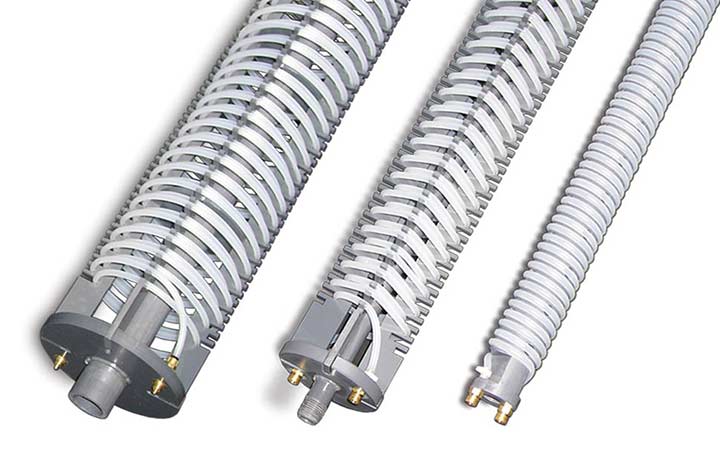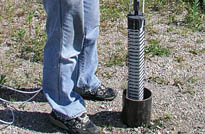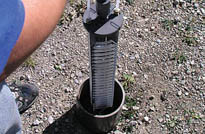- Low Cost
- Easy to Install and Remove
- Low Maintenance and Operating Effort
- No Electricity Needed
- Provides a Steady Release for Constant Microbial Activity
Overview
The 703 Waterloo Emitter, is a cost effective, simple device that has been designed to assist in-situ remedial biodegradation of MTBE, BTEX and other contaminants. It is intended for the controlled and uniform release of oxygen or other bio-enhancing amendments, which encourages and sustains the growth of microorganisms required for in-situ bioremediation of contaminated groundwater.
The 703 uses patented technology enabling a continuous, direct diffusion of oxygen into an aquifer through a pressurized silicone or LDPE tubing. The continuous release of oxygen into the tubing creates the ideal concentration gradient driving this passive system, without bubbling off excess oxygen.
The Waterloo Emitter has silicone or polyethylene tubing coiled around a PVC frame. When fluid enters the tubing it can be pressurized to obtain the desired diffusive transfer of gas making it appropriate for site specific needs. The units can be stacked in a well and joined from one well to another to create a controlled continuous diffusion of gas into the plume. They are suitable for 50, 100, 150mm (2â??, 4â?? and 6â??) wells.
Manufactured by: Solinst
Model: 703 Waterloo Emitter for Enhanced Bioremediation
Services offered for this product
- Sales
- Rental
- Installation
- Calibration
- Maintenance
- IoT Cloud Compatible
Applications
Oxygen release for aerobic bioredediation of BTEX and MTBE
Hydrogen release for anaerobic reductive dechlorination of solvents
Introduction of dissolved SF6, argon, etc for use as tracers
Release of CO2 for pH adjustment
Light alkane release to promote co-metabolic biodegradation of MTBE
Plume migration barrier, primary remediation device, or polishing
Specification
| Length | 130 cm (51”) |
| To Fit Well Diameters | 50 mm, 100 mm and 150 mm (2”, 4” and 6”) |



